If you want to know about the water supply requirements for building or arrangements for various plumbing fixtures or water supply system in tall building, please click the link.
The principles of water supply refer to the fundamental concepts and guidelines that should be followed in the provision of safe and reliable water to consumers. These principles are essential for ensuring that the water supply system is efficient, effective, and sustainable.
The design of water supply takes the following into consideration.
- Number of occupants.
- Minimum water requirements for different purposes.
- Treatment of water based on the quality of water.
- Quantity of water stored.
- Sizing of pipes.
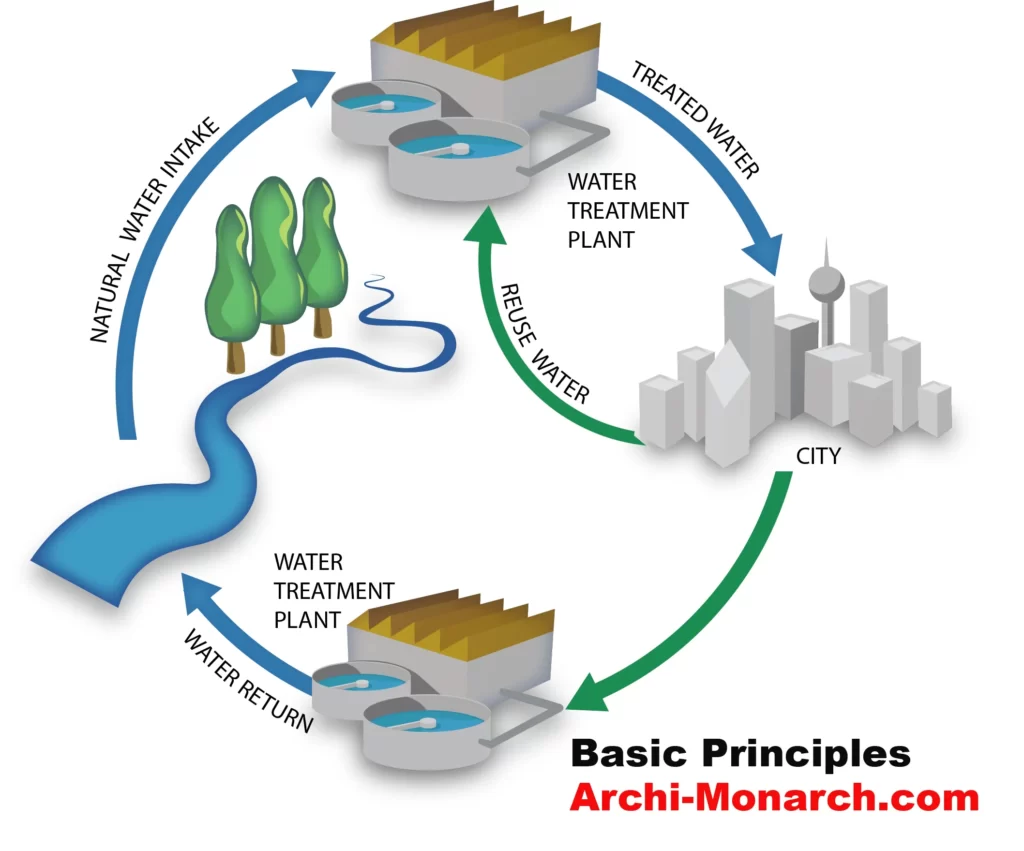
1) Water provision
- Plumbing fixtures, devices and appurtenances shall be provided with water in sufficient volume and at pressures adequate to enable them to function properly and without undue noise under normal conditions of use.
- There should be at least a residual head of 0.018 N/mm2 at the consumer’s tap.
- There may be certain fixtures or appliances in the installation that may require a higher pressure, such as 0.05 N/mm2 or even higher (such as 0.1 N/mm2 in case of flush valves), in which case the system shall be designed using pumps, tanks or both to achieve the required minimum pressure.
2) Water efficiency
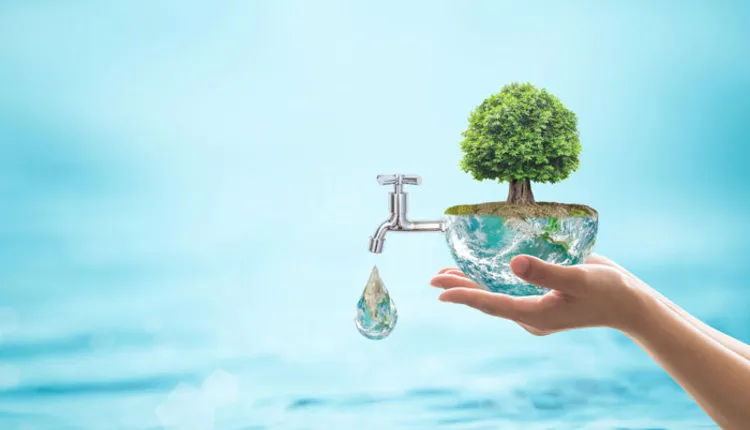
- Plumbing system shall be designed, installed and adjusted to use the optimum quantity of water consistent with proper performance and cleaning.
3) Safety devices

- Plumbing system shall be designed and installed with safety devices to safeguard against dangers from contamination, explosion, overheating, etc.
4) Minimum water amenities
- It is recommended that each dwelling unit should have at least one water closet, one lavatory, one kitchen wash place or a sink, and one bathing place or shower to meet the basic requirements of sanitation and personal hygiene.
5) Drainage system
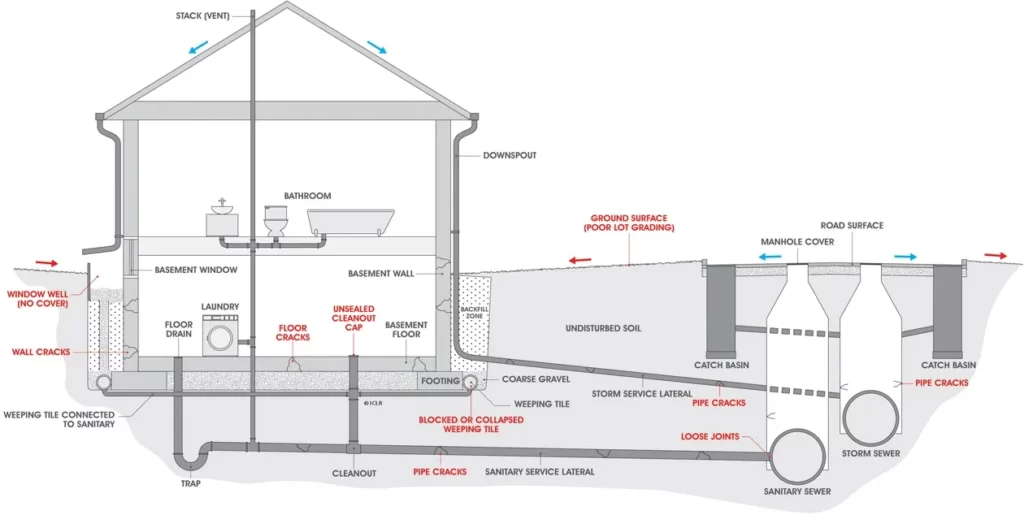
- The drainage system shall be designed, installed and maintained to guard against fouling, deposit of solids and clogging and with adequate cleanouts so arranged that the pipes may be readily cleaned.
6) Materials and workmanship
- The plumbing system shall have durable material, free from defective workmanship and so designed and installed as to give satisfactory service for its reasonable expected life.
- The accessories of the plumbing system should be of such specifications as to meet the functional requirements of the installation, so as to also avoid any inconsistency leading to leakage and resultant seepage.
7) Fixture traps and vent pipes
- Each fixture directly connected to the drainage system shall be equipped with a liquid seal trap.
- Trap seals shall be maintained to prevent sewer gas, other potentially dangerous or noxious fumes, or vermin from entering the building.
- Further, the drainage system shall be designed to provide an adequate circulation of air in all pipes with no danger of siphonage, aspiration, or forcing of trap seals under conditions of ordinary use by providing vent pipes throughout the system.
8) Foul air exhaust
- Each vent terminal shall extend to the outer air and be so installed as to minimize the possibilities of clogging and the return of foul air to the building, as it conveys potentially noxious or explosive gases to the outside atmosphere.
- All vent pipes shall be provided with a cowl.
9) Testing
- The plumbing system shall be subjected to required tests to effectively disclose all leaks and defects in the work or the material.
10) Exclusion from plumbing system
- No substance that will clog or accentuate clogging of pipes, produce explosive mixtures, destroy the pipes or their joints, or interfere unduly with the sewage-disposal process shall be allowed to enter the drainage system.
11) Light and ventilation
- Wherever water closet or similar fixture is located in a room or compartment, it should be properly lighted and ventilated.
12) Individual sewage disposal systems

- If water closets or other plumbing fixtures are installed in buildings where connection to public sewer is not possible, suitable provision shall be made for acceptable treatment and disposal.
13) Maintenance
- Plumbing systems shall be maintained in a safe and serviceable condition.
14) Approach for use and cleaning
- All plumbing fixtures shall be so installed with regard to spacing as to be approachable for their intended use and for cleaning.
- All doors, windows and any other device needing access within the toilet shall be so located that they have proper approach.
15) Accessibility for persons with disabilities
- All doors, windows and fixtures, including WC, urinals, grab bars, washbasin, mirror and all other accessories for use by persons with disabilities shall be so installed/ located that they have proper access with appropriate width, height, space, centerlines, and ease of operation.
16) Structural safety
- Plumbing system shall be installed with due regard to preservation of the structural members and prevention of damage to walls and other surfaces.
17) Protection of ground and surface water
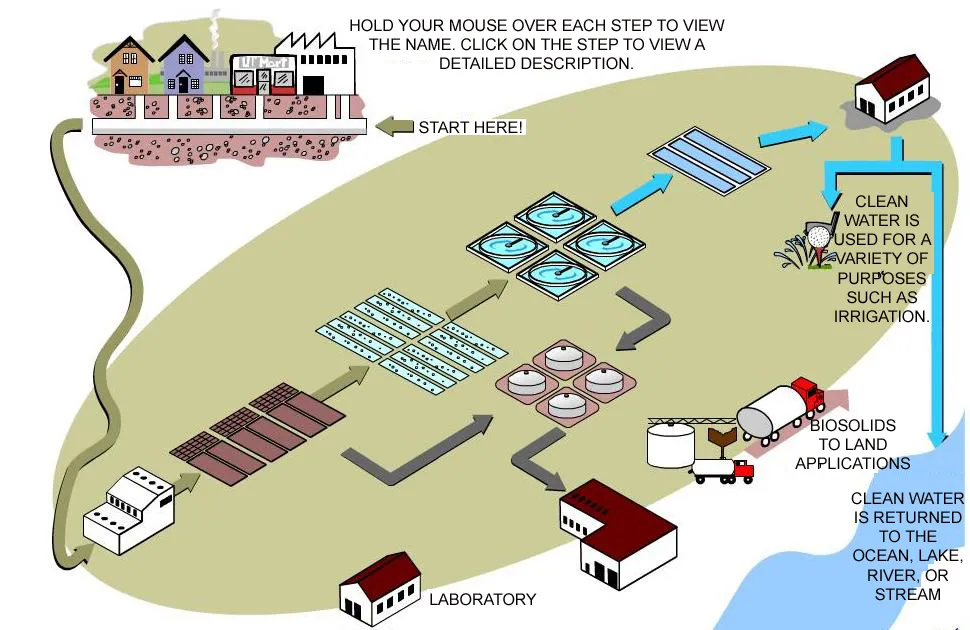
- Sewage or other waste shall not be discharged into surface or sub-surface water without acceptable form of treatment.
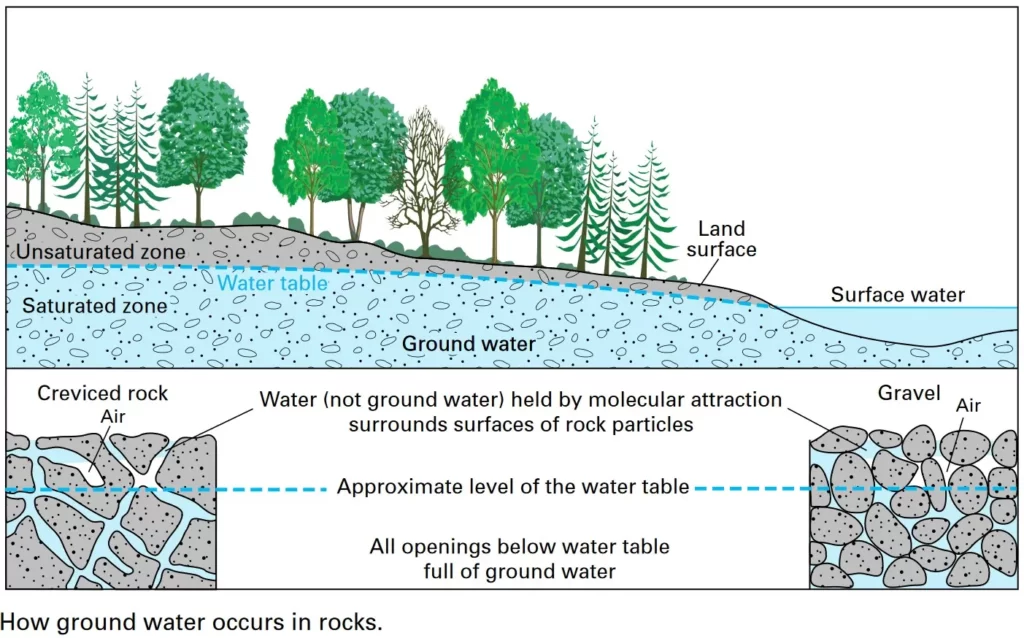
Overall, the principles of water supply are essential for ensuring the provision of safe, reliable, and sustainable water to consumers. These principles should be followed by water utilities and other organizations responsible for water supply.